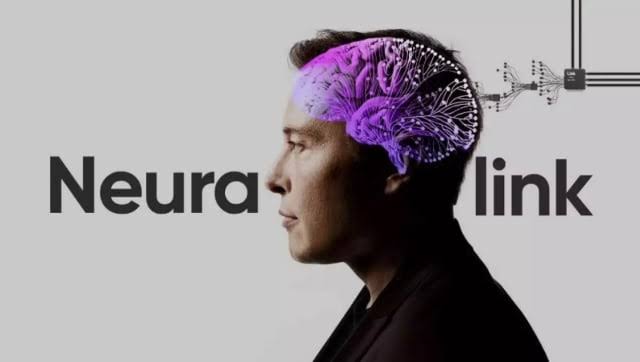
Neuralink & Brain-Computer Interfaces: Where Are We Headed?
Neuralink and brain-computer interfaces (BCIs) are pioneering a future where thoughts can control technology. These innovations promise breakthroughs in treating paralysis, restoring senses, and enhancing human cognition. By linking our brains to AI and digital systems, they may transform how we interact with the world. However, ethical, medical, and societal concerns must be addressed to ensure safe, equitable, and meaningful use of these groundbreaking technologies.
✨ Raghav Jain

Introduction
Imagine controlling your phone with your thoughts, restoring vision to the blind, or reversing neurological diseases through technology. Sounds like science fiction? With Neuralink and other brain-computer interface (BCI) technologies, we’re stepping into a future where direct communication between the human brain and machines is becoming a reality.
Neuralink, founded by Elon Musk, is a pioneer in developing high-bandwidth, implantable brain chips that can read and write brain signals. But it’s not the only one—BCI research is a global movement, blending neuroscience, AI, and engineering to reshape how humans interact with the world.
In this article, we’ll explore what BCIs are, how Neuralink works, the benefits and risks, and what this means for the future of medicine, communication, and human evolution. The BCI field has seen remarkable advancements, moving from theoretical concepts to tangible human applications. For decades, researchers have been developing systems, both invasive and non-invasive, to assist individuals with severe neurological impairments. Early successes, such as those from the BrainGate consortium, demonstrated that individuals with paralysis could control robotic arms or computer cursors using implanted electrode arrays. Neuralink has built upon this foundation, aiming for a more refined, high-density, and wireless solution. As of July 2025, Neuralink has made significant strides, most notably with its first human implant in January 2024. This groundbreaking procedure, involving the surgical implantation of the "Link" device and ultra-thin, flexible threads into the brain's motor cortex by a specialized robotic system (R1), marked a pivotal moment. The initial human patient, Noland Arbaugh, a quadriplegic, successfully demonstrated the ability to control a computer cursor and play online chess using his thoughts alone. Recent reports indicate Neuralink has successfully performed multiple implants, including two in a single day, indicating increasing efficiency and readiness for broader clinical application. The "Telepathy" system, as Musk terms it, aims to restore digital independence for those with conditions like quadriplegia, ALS, and spinal cord injuries. Beyond motor control, Neuralink is also pursuing applications like "Blindsight" for restoring vision in individuals with an undamaged visual cortex and "speech restoration" for non-verbal conditions, indicating a multi-faceted approach to neurological challenges.
Future Applications: Beyond Medical Restoration
While the immediate and ethically compelling applications of BCIs, including Neuralink's, are in the medical domain – restoring lost functions, enabling communication for the locked-in, and providing control over advanced prosthetics – the long-term vision extends far beyond. The potential applications are vast and venture into realms often depicted in science fiction. For individuals with severe motor disabilities, BCIs could offer unparalleled independence, allowing them to control wheelchairs, smart home devices, and communication tools with unprecedented ease. For those with neurodegenerative diseases like Parkinson's or epilepsy, targeted brain stimulation via BCIs could potentially alleviate symptoms or even prevent seizures. The therapeutic potential is immense, promising improved quality of life for millions.
However, the more speculative, yet frequently discussed, future applications involve human enhancement. Elon Musk's long-term vision for Neuralink includes a "human-AI symbiosis" where humans can seamlessly interface with artificial intelligence to keep pace with rapidly advancing AI capabilities. This could mean enhanced memory, improved cognitive processing speed, and even "brain-to-brain" communication. Imagine learning a new language by direct download, sharing thoughts telepathically, or experiencing virtual realities with unprecedented immersion. Some envision the ability to perceive new senses, such as wireless data transmissions or electromagnetic fields, directly through a BCI. While these ideas remain largely in the conceptual or very early research stages, they highlight the profound transformative potential and the philosophical questions surrounding what it means to be human in an age of intimate technological integration.
Ethical Considerations: Navigating Uncharted Territory
The rapid progression of BCI technology, particularly invasive implants like Neuralink's, brings with it a complex web of ethical concerns that demand careful consideration. One of the foremost issues is safety and long-term health risks. Brain surgery, even when robotically assisted, carries inherent risks, including infection, hemorrhage, and potential tissue damage. The long-term biocompatibility of implants, the stability of signal quality over years, and the body's immune response to foreign objects are critical unknowns. As of 2024, Neuralink did report some issues with thread retraction in its first patient, highlighting the engineering challenges of long-term implantation.
Beyond immediate physical risks, privacy and data security are paramount. BCIs collect highly intimate and sensitive neural data, potentially revealing thoughts, emotions, and even predispositions. Who owns this data? How will it be stored, protected, and used? The risk of hacking or unauthorized access to such personal information is a major concern, potentially leading to unprecedented forms of surveillance or manipulation. Informed consent becomes particularly complex for individuals who are non-communicative or in vulnerable states. Ensuring genuine understanding of the risks and benefits for such patients is a significant ethical challenge.
Furthermore, the prospect of cognitive enhancement raises profound societal questions. If BCIs can augment memory or intelligence, will this create a "neuro-elite," exacerbating existing social and economic inequalities? What are the implications for human autonomy and identity if our brains are directly connected to external systems? Could these devices subtly influence our thoughts or behaviors? The very definition of personhood might evolve as the line between human and machine blurs. These are not merely futuristic hypotheticals but pressing ethical dilemmas that require robust frameworks, public dialogue, and international collaboration to address.
Regulatory Landscape and Challenges Ahead
The regulatory environment for BCIs, particularly those with invasive components, is still maturing. In the United States, the Food and Drug Administration (FDA) plays a crucial role, granting Investigational Device Exemptions (IDEs) for human trials and eventually market approvals. Neuralink received FDA approval for its first-in-human clinical trial in May 2023, a significant milestone. However, the path to widespread commercial availability is long and arduous, requiring extensive safety and efficacy data from large-scale clinical trials. The regulatory process for medical devices is rigorous, focusing on ensuring that the benefits outweigh the risks.
Beyond medical applications, the regulation of BCI devices intended for "wellness" or "enhancement" is even less defined. Different countries and regions are grappling with how to classify and oversee technologies that blur the line between therapy and lifestyle. Europe, for instance, is developing frameworks that might classify certain consumer neuro-devices under the Medical Devices Regulation (MDR) if they make health-related claims or involve transcranial stimulation. The General Product Safety Regulation (GPSR) is also beginning to address risks associated with digital neurotech, including mental health risks and cybersecurity.
Key challenges for the widespread adoption and long-term success of BCIs include:
- Engineering Reliability: Ensuring implants remain stable, functional, and safe within the brain for decades, resisting biological degradation and maintaining signal integrity.
- Data Compression and Transmission: The sheer volume of neural data generated necessitates highly efficient compression and wireless transmission to external devices without overheating or excessive power consumption.
- User Interface and Calibration: Making the devices intuitive and easy for users to operate, with minimal or no need for complex, repeated calibration.
- Scalability and Affordability: Developing manufacturing processes that can produce devices at scale and making the technology affordable and accessible to those who need it most, preventing it from becoming a luxury.
- Societal Acceptance: Addressing public fears and ethical concerns to foster trust and acceptance of such intimate technology.
What is a Brain-Computer Interface (BCI)?
A Brain-Computer Interface is a system that creates a direct communication pathway between your brain and an external device (like a computer or robot).
Key Components:
- Sensors – detect brain activity (EEG, implants)
- Decoder – translates brain signals into commands
- Effector – performs the desired action (e.g., moves a cursor, sends a message)
BCIs can be:
- Invasive (implanted in the brain, like Neuralink)
- Semi-invasive (placed on the brain’s surface)
- Non-invasive (EEG caps or helmets worn externally)
What is Neuralink?
Neuralink is a neurotechnology company developing ultra-thin brain implants that can monitor and stimulate brain activity. Their device—called the Link—has thousands of tiny threads, thinner than a human hair, embedded into the brain to record and interpret neural signals.
Key Features:
- Wireless data transmission
- AI-powered interpretation of brain activity
- Robotic surgical implantation for precision
- Real-time communication with computers or prosthetics
Neuralink’s goal is to eventually merge human intelligence with artificial intelligence, treating neurological disorders in the short term and enhancing human capability in the long term.
How Neuralink Works
- Implantation
- A surgical robot implants the device into the skull, connecting the threads to specific regions of the brain.
- Neural Signal Capture
- The Link captures electrical signals produced by neurons and transmits them wirelessly.
- Signal Decoding
- Using AI, these signals are decoded into real-world actions—like moving a cursor or typing a word.
- Feedback Loop
- Eventually, the chip will not only read brain signals but also stimulate areas of the brain to restore or enhance function.
Current Applications of BCIs
While futuristic visions are still developing, BCIs already have real-world uses today:
- Paralysis Support
- Allowing paralyzed individuals to control robotic limbs or type using thoughts.
- Communication for ALS Patients
- People with locked-in syndrome can communicate via BCI typing systems.
- Seizure Detection
- Early detection of epilepsy or neurological disorders through implanted sensors.
- Prosthetic Control
- BCIs can directly control prosthetic arms or legs based on brain signals.
- Hearing and Vision Restoration
- BCIs are being explored to restore lost senses using brain stimulation.
Future Possibilities: Where Are We Headed?
1. Memory Enhancement
Chips could store and retrieve memory data, helping those with Alzheimer’s or even improving memory in healthy individuals.
2. Brain-to-Brain Communication
Imagine sending thoughts or emotions directly to another person—Neuralink aims to make this possible.
3. Digital Telepathy
You could browse the internet or control your smart home just by thinking.
4. Immersive VR Gaming
Gaming could become a full-brain experience—no controllers, just pure thought interaction.
5. Merging with AI
Neuralink’s long-term vision is to prevent AI from outpacing us—by letting humans connect to it directly.
Ethical and Safety Concerns
As exciting as it sounds, this technology raises serious concerns:
- Privacy Risks
- Who owns your brain data? Could it be hacked or sold?
- Security
- BCIs could become targets of brain-hacking or data theft.
- Mental Manipulation
- With stimulation capabilities, could thoughts or emotions be influenced?
- Inequality
- Will only the rich have access to enhanced cognitive power?
- Human Identity
- What does it mean to be human if machines can upgrade our minds?
Daily Life With BCIs: A Future Glimpse
Here’s how a day might look in a world where BCIs are mainstream:
Morning
- Wake up as your BCI syncs your sleep data to your wellness app
- Brew coffee with a thought
- Your calendar appears on your smart lens, triggered by brain command
Afternoon
- Type reports by thinking
- Video call a friend with brain-to-brain link
- Learn a language with memory-enhancing stimulation
Evening
- Play a VR game by immersing your mind
- Listen to music directly transmitted to your auditory cortex
- Sleep, while the chip logs neural patterns and repairs cognitive fatigue
Myths About Neuralink and BCIs: Busted!
“Neuralink reads your mind.”
→ False! It reads patterns of brain activity, not thoughts or secrets.
“It’s only for disabled people.”
→ Not true. The tech is evolving toward mainstream use for enhancement too.
“You’ll lose your humanity.”
→ BCI enhances human ability, but ethical limits are being discussed globally.
“It’s ready for the public now.”
→ Nope! It’s in testing stages. Full public use is still years away.
“Only Neuralink is working on BCIs.”
→ Wrong! Companies like Synchron, Blackrock Neurotech, and academic labs are also advancing this field.
How You Can Learn More (Even Without Tech Background)
- Books:
- “The Age of Em” by Robin Hanson
- “How to Create a Mind” by Ray Kurzweil
- Courses:
- Free online classes on edX or Coursera (search “Neuroscience” or “BCI”)
- YouTube Channels:
- Neuralink official, TEDx Neuroscience Talks, Kurzgesagt
- Podcasts:
- Lex Fridman Podcast, The Brain Science Podcast, Future of Life Institute
Conclusion
Brain-computer interfaces are no longer a distant dream—they’re becoming part of our present and a big part of our future. While Neuralink leads with bold ambitions, the entire BCI field is evolving to cure diseases, restore abilities, and eventually merge human cognition with machine intelligence.
Yet, with great power comes great responsibility. It’s crucial to approach these advances with ethical awareness, cautious optimism, and global dialogue. Whether you’re a student, tech lover, or just a curious mind, understanding BCIs today prepares you for the world of tomorrow.
The brain is no longer the limit—it’s the gateway.
Are you ready to think beyond thought?
Q&A Section
Q1:- What is Neuralink and what does it aim to achieve?
Ans :- Neuralink is a neurotechnology company founded by Elon Musk that develops brain-computer interfaces (BCIs) to connect the human brain directly with digital devices, aiming to treat neurological conditions and enable seamless human-AI interaction.
Q2:- What are Brain-Computer Interfaces (BCIs) and how do they work?
Ans :- BCIs are systems that allow direct communication between the brain and external devices by detecting brain signals (like EEG or neural impulses) and translating them into digital commands.
Q3:- How can BCIs help people with disabilities or neurological disorders?
Ans :- BCIs can restore motor control for paralyzed individuals, enable communication for people with ALS, and assist in treating epilepsy, Parkinson’s, and spinal injuries by bypassing damaged neural pathways.
Q4:- What kind of technology does Neuralink use to interface with the brain?
Ans :- Neuralink implants ultra-thin, flexible threads containing electrodes into the brain using a precision robotic system to record neural activity and send signals to external devices wirelessly.
Q5:- How is Neuralink different from other BCI technologies?
Ans :- Neuralink focuses on high-bandwidth, wireless BCIs with thousands of electrodes, aiming for real-time processing, minimal invasiveness, and broader use cases beyond medical therapy, including cognitive enhancement.
Q6:- What are the potential future applications of BCIs beyond medicine?
Ans :- BCIs could enable telepathic communication, augmented memory, control of smart devices by thought, brain-based gaming, virtual reality immersion, and even mental data storage or replay.
Q7:- What ethical concerns are associated with BCIs and Neuralink?
Ans :- Concerns include data privacy, mind control, consent, cognitive manipulation, widening social inequality, and potential misuse by governments or corporations for surveillance or behavior tracking.
Q8:- Are there any risks or side effects involved in Neuralink’s brain implants?
Ans :- Yes. Risks include surgical complications, long-term biocompatibility, brain tissue damage, infection, or malfunctioning devices, although Neuralink aims to minimize these using robotic precision and miniaturized design.
Q9:- How soon could Neuralink or similar BCIs become widely available?
Ans :- Neuralink has begun early human trials, but widespread adoption could take 5–10 years, depending on regulatory approvals, safety validation, ethical guidelines, and public acceptance.
Q10:- Can Neuralink really merge humans with artificial intelligence?
Ans :- Theoretically, yes. Neuralink’s vision is to create a high-bandwidth brain interface that allows humans to interface directly with AI systems, enabling real-time data exchange and cognitive augmentation to keep pace with machine intelligence.
Similar Articles
Find more relatable content in similar Articles

3D-Printed Organs: Are We Clos..
3D-printed organs are at the f.. Read More

The Rise of Digital Twins: You..
Digital twins are transforming.. Read More

Virtual Reality Therapy: Heali..
Virtual Reality Therapy (VRT) .. Read More

The Hidden Energy Cost of Stre..
As digital streaming and onlin.. Read More
Explore Other Categories
Explore many different categories of articles ranging from Gadgets to Security
Smart Devices, Gear & Innovations
Discover in-depth reviews, hands-on experiences, and expert insights on the newest gadgets—from smartphones to smartwatches, headphones, wearables, and everything in between. Stay ahead with the latest in tech gear
Apps That Power Your World
Explore essential mobile and desktop applications across all platforms. From productivity boosters to creative tools, we cover updates, recommendations, and how-tos to make your digital life easier and more efficient.
Tomorrow's Technology, Today's Insights
Dive into the world of emerging technologies, AI breakthroughs, space tech, robotics, and innovations shaping the future. Stay informed on what's next in the evolution of science and technology.
Protecting You in a Digital Age
Learn how to secure your data, protect your privacy, and understand the latest in online threats. We break down complex cybersecurity topics into practical advice for everyday users and professionals alike.
© 2025 Copyrights by rTechnology. All Rights Reserved.